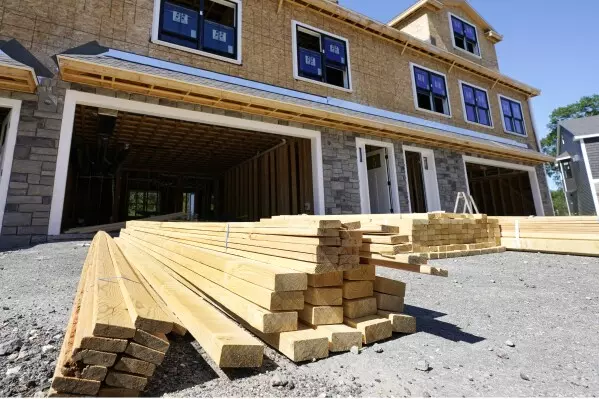Top 5 Investment Considerations for 2025 in Nashville and Memphis

1. Macro Trends: Population & Economic Growth
-
Tennessee as a Growth Powerhouse
The state’s population rose ~1.3% in 2023 and is expected to continue growing, driven by strong job creation and economic appeal (flipsquad.io, ahlend.com).-
Nashville: Fastest-growing metro in Tennessee, adding over 50K jobs in 2023 from industries like healthcare, tech, entertainment, and logistics .
-
Memphis: A logistics and transport hub anchored by FedEx, with strong MSA-level rental demand and near-6%+ rental yields (en.wikipedia.org).
-
Why it matters: Population growth drives housing demand, rent increases, and long-term asset appreciation.
2. Local Market Dynamics & Inventory
-
Nashville:
-
Multifamily completions are projected to drop ~40% in 2025 vs. 2022–23, tightening rental supply and sparking rent growth (~2% rise expected by Q4) (mmgrea.com).
-
Hot spots like Lower Broadway have seen property values climb over 140% since 2021—but rising taxes may pressure owners (axios.com).
-
-
Memphis:
-
Tight inventory paired with affordability: median home price ~$253K vs. ~$758K (LA) and ~$695K (Seattle) (meridianpacificproperties.com).
-
Suburban markets are particularly strong, especially for single-family rentals (6–8% gross yields, 95%+ occupancy) (meridianpacificproperties.com).
-
3. Taxes, Regulations, & Infrastructure
-
Tax advantages:
Tennessee has no state income tax, increasing net rental profitability (flipsquad.io). -
Infrastructure boosts:
-
Nashville’s $3.1 B transit referendum (“Choose How You Move”) passed in November 2024, funding bus routes, sidewalks, and smart signals from Feb 2025 (en.wikipedia.org).
-
Memphis is upgrading the Memphis–Arkansas Bridge (~$787M), easing commerce and transport connectivity (en.wikipedia.org).
-
-
Corporate investments:
-
Nashville: In‑N‑Out and Amazon expanding; major airport and East Bank/Yards projects enhancing urban appeal (axios.com).
-
Memphis region: the huge Blue Oval City EV/factory campus (Ford/SK Innovation) launches in 2025 with ~5,800 jobs (en.wikipedia.org).
-
4. Asset Types: What to Buy
-
Nashville:
-
Multifamily condos & rentals in tight-supply zones like Germantown and East Nashville, where values have risen ~12–18% annually .
-
Commercial/entertainment districts (e.g. Lower Broadway) offer upside but carry rising tax risk .
-
-
Memphis:
-
Suburban single-family rentals (SFR): affordable entry, 6–8% yields, professional management (meridianpacificproperties.com).
-
Urban rentals in Midtown and Cooper‑Young: high occupancy, 7% yields, mix of flips and long-term holds (flipsquad.io).
-
5. Risk Factors & Strategic Timing
-
Mortgage rates & affordability:
-
Rates above 6%, holding at ~6.5% early 2025; affordability remains tight—builders may offer incentives (marketwatch.com).
-
-
Luxury pricing & market segmentation:
-
Nashville’s luxury market (18% of listings above $1M) is thriving thanks to coastal buyer migration—but needs cautious analysis (axios.com).
-
-
Navigate diverse local ecosystems:
-
In Memphis, crime levels and neighborhood heterogeneity mean micro-market due diligence is essential (avoid generalizing city-wide) (meridianpacificproperties.com).
-
✔️ Bottom Line: 5 Key Takeaways
-
Tap into robust TN growth—demographics, no income tax, and job creation are strong tailwinds.
-
Favor supply-constrained African neighborhoods—tight multifamily in Nashville, high-demand suburban SFR in Memphis.
-
Monitor key infrastructure and corporate catalysts—transit, logistics, airport, EV plant.
-
Diversify assets—balance high-yield rentals with value-add flips or select commercial.
-
Stress-test for rate and tax exposure—plan for financing headwinds and rising property taxes.
🔍 Final Advice for 2025
-
If you want steady cash flow and value, go for Memphis suburban rentals.
-
If you prefer growth, appreciation, and long-term upside, choose Nashville multifamily condos or luxury flips—but prepare for higher entry costs and tax complexities.
Let me know if you’d like a deep dive into any of these niches—like cash flow projections, neighborhood guides, or financing options!
Categories
Recent Posts











